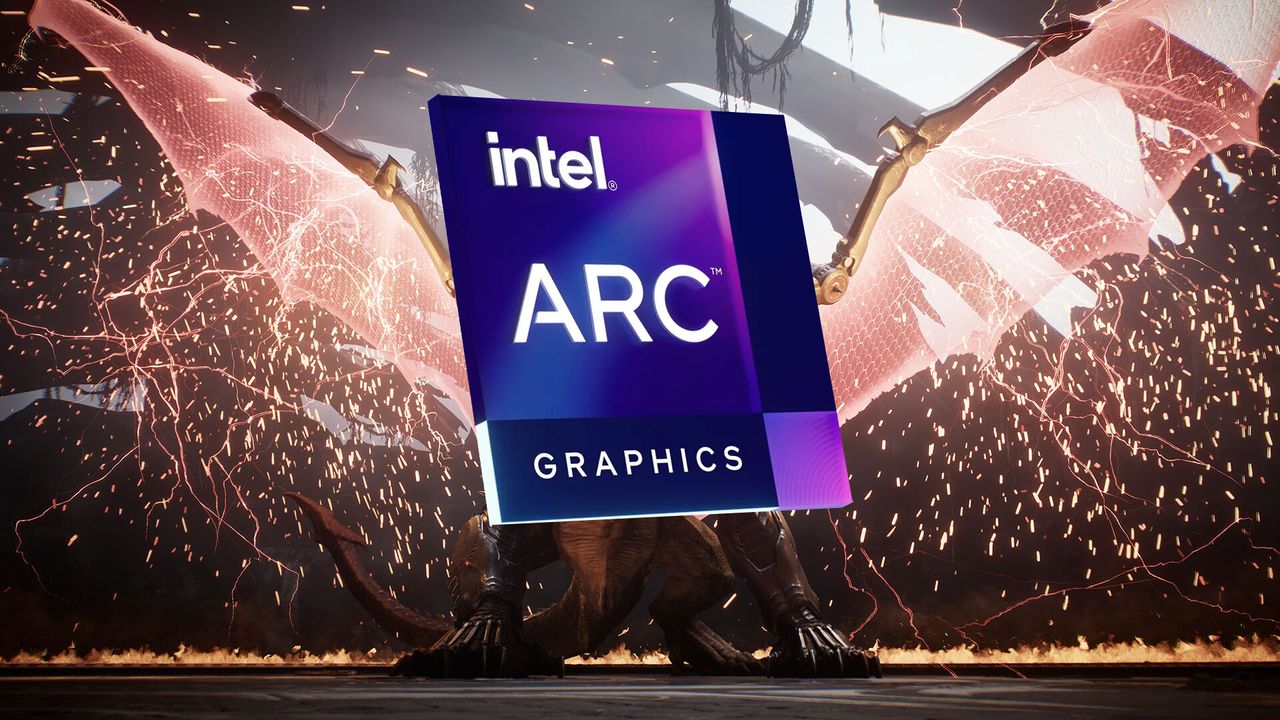
While Intel’s Tech Tour 2025 focused on new processors for phones and advances in artificial intelligence, a closer look reveals Intel is also working to significantly improve the graphics processing capabilities built into our laptops.
I recently visited Intel in Chandler, Arizona, to get a preview of their next-generation Panther Lake chips. I also learned about the new Intel Arc B-Series graphics processing unit, which will be included with these chips.
Intel’s new Panther Lake processors aren’t only significantly faster for gaming and running large AI models compared to last year – they also introduce the next version of XeSS technology, called XeSS 3. Here’s a breakdown of the key improvements.
Intel Arc B-Series comes to mobile hardware
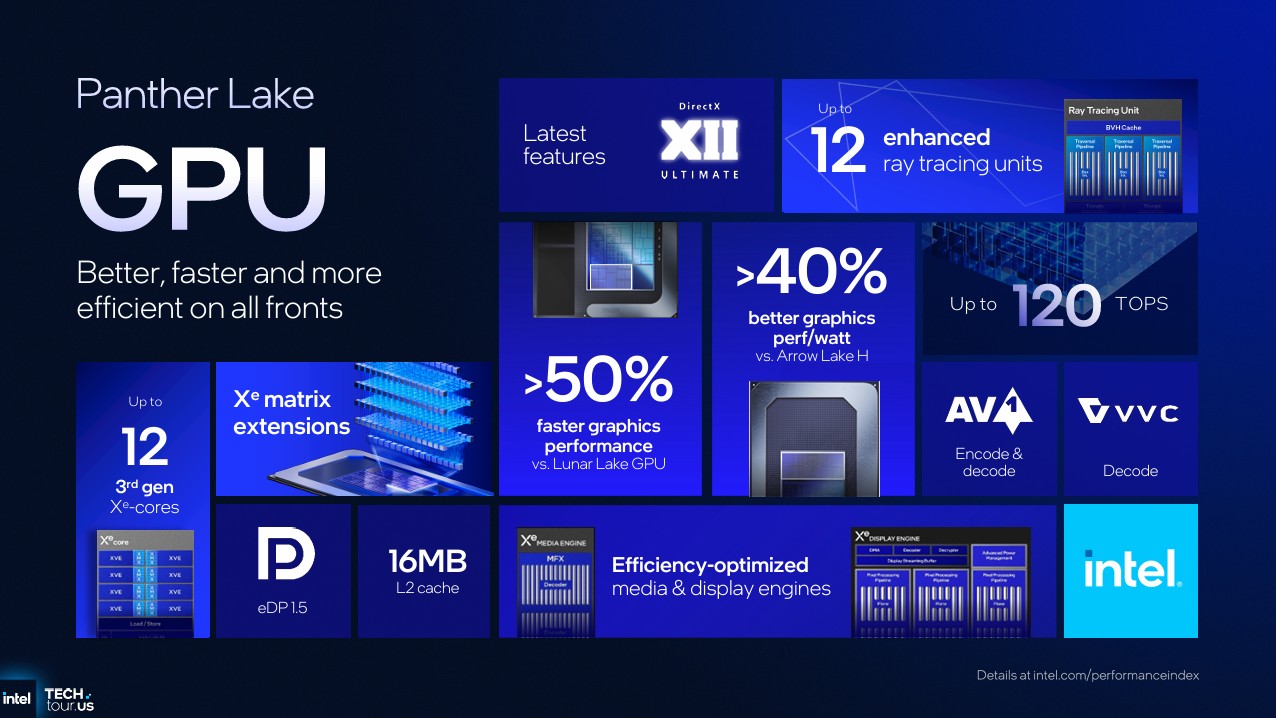
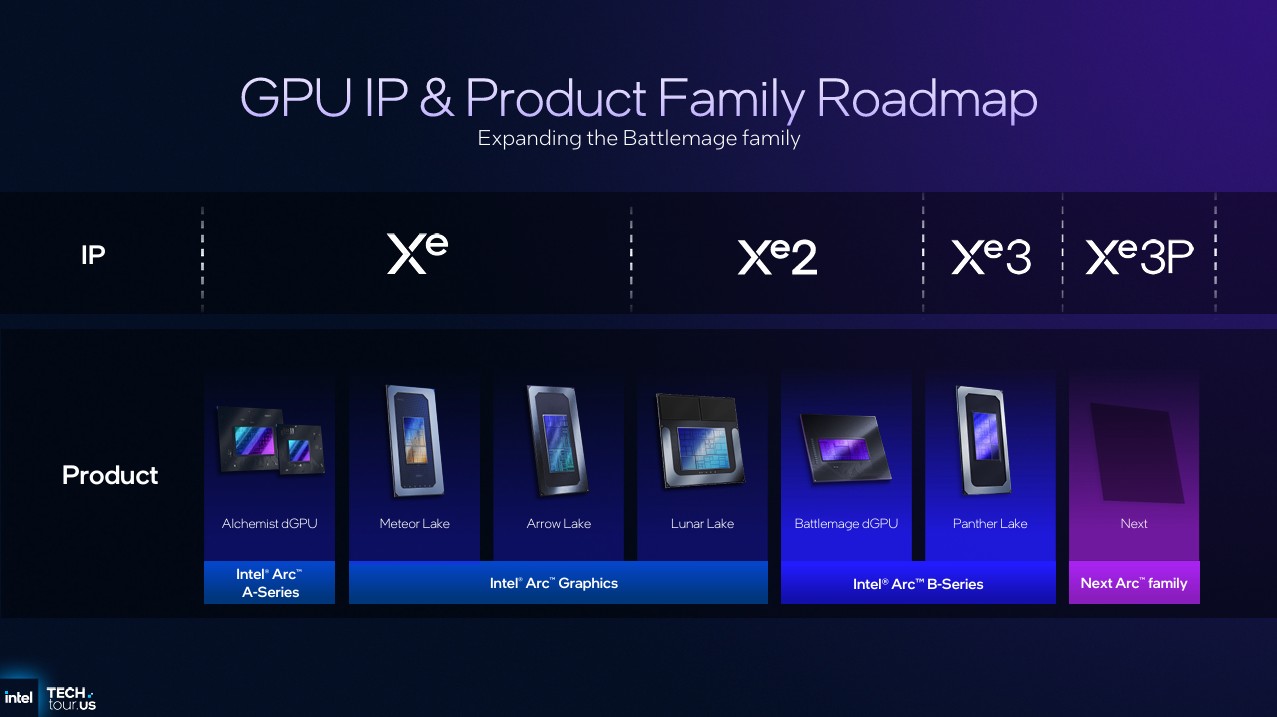

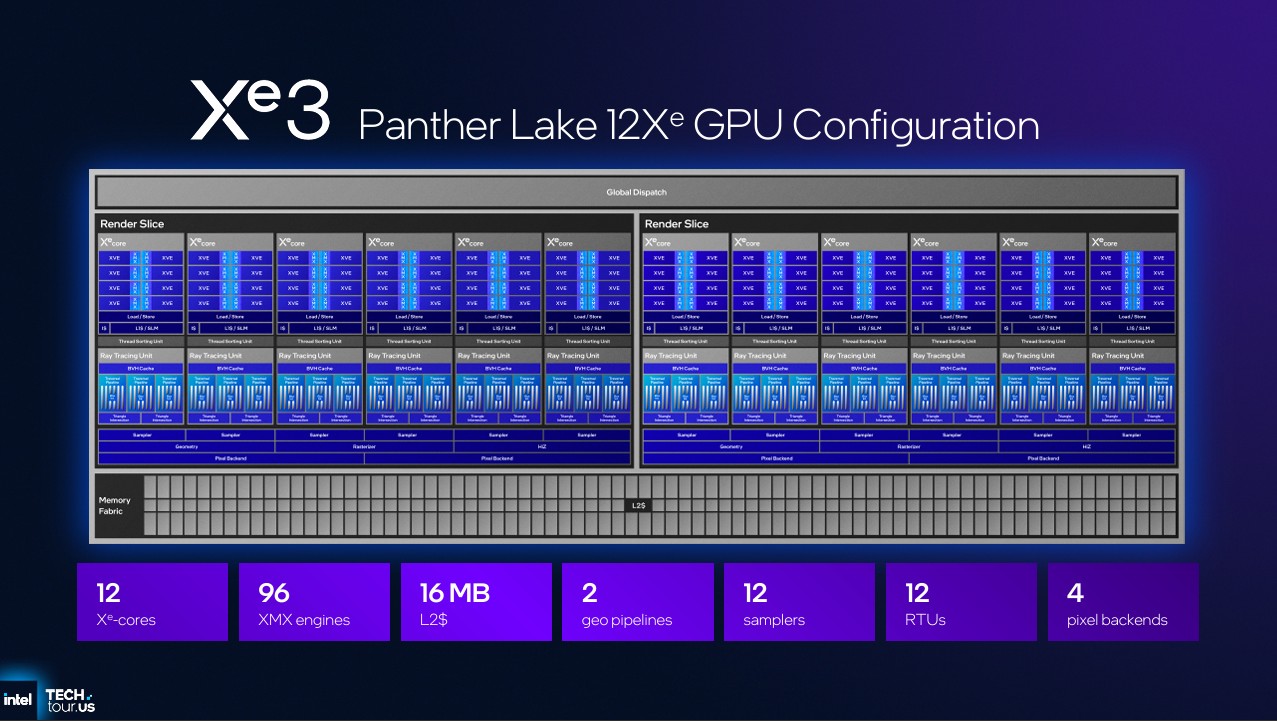
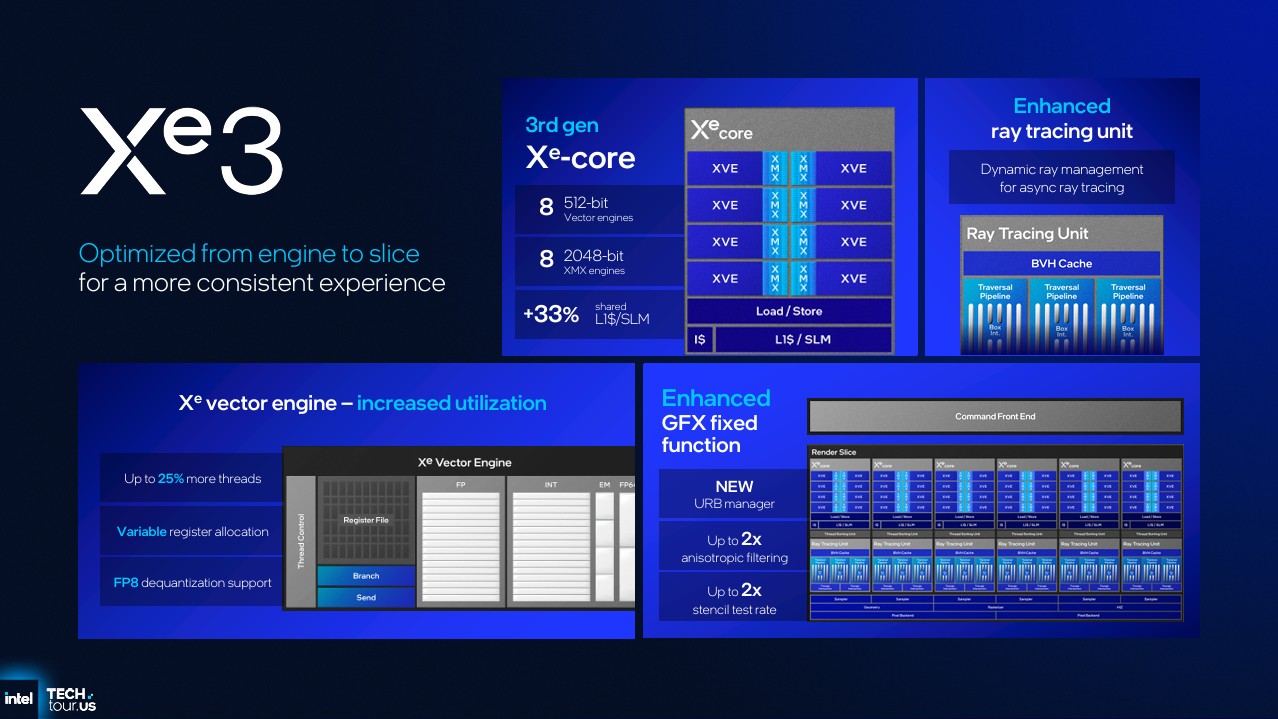
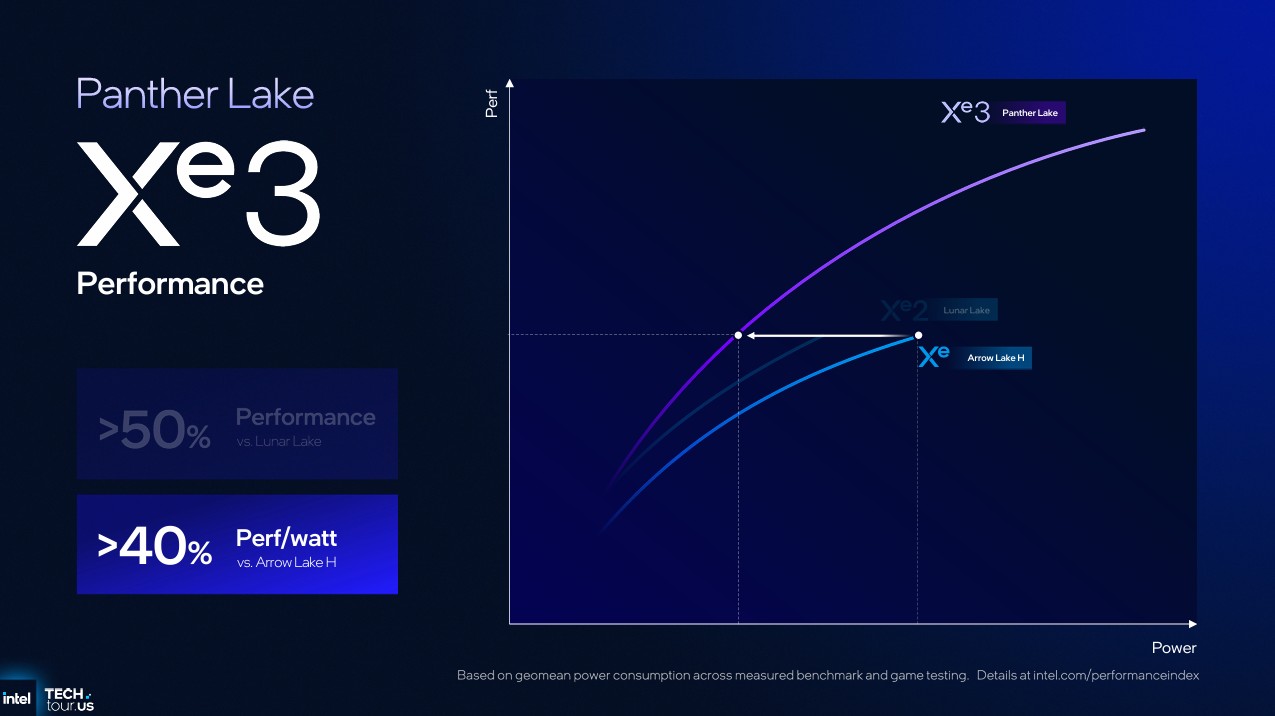
I’ve already covered everything about Panther Lake, including a look inside the factory where it’s being built. Now, let’s focus on the specific improvements Intel has made to the graphics processing unit (GPU) with this new technology.
Intel has separated the graphics processing unit (GPU) from the main processor, letting them improve the graphics performance without needing to overhaul the entire system. They’re calling the GPU in their new Panther Lake chips the “Intel Arc B-Series,” which is the same name as their current graphics cards for desktop computers.
Panther Lake features the latest third-generation Xe cores, representing a completely new architecture. Intel acknowledged the unusual naming might be confusing, but emphasized that performance is what truly counts.
Intel’s Xe3 graphics cards are designed for smooth and efficient performance. While the core technology isn’t drastically different from the previous generation, Xe3 includes improvements like better ray tracing, faster processing speeds, increased memory capacity, and reduced performance limitations. Intel also refined how the system manages and utilizes the graphics card’s resources for a significant overall boost.
Improvements throughout the system are leading to significant performance increases with Intel Arc B-Series and Panther Lake compared to last year.
Panther Lake processors will offer up to 12 high-performance Xe3 cores and 12 cores for ray tracing. Intel expects these new processors to be significantly faster – over 50% better than Lunar Lake – and more energy-efficient, offering a more than 40% improvement in performance-per-watt compared to Arrow Lake. These improvements also translate to smoother gameplay and quicker loading times in certain games and AI applications.
The new Intel Arc graphics card, combined with the upcoming Panther Lake processors, boasts a significantly improved display engine. It supports more video formats, the latest display technology (Embedded DisplayPort 1.5), and AI enhancements that deliver up to 120 TOPS of processing power. Intel has hinted that Panther Lake and the new Arc GPU will also be featured in portable gaming devices, which is something to look forward to.
I recently chatted with Intel, and they assured me that Arc isn’t going anywhere! Despite the exciting news about them partnering with NVIDIA to create processors with built-in RTX GPUs, they’re still fully committed to developing and improving the Arc graphics cards. It’s great to hear they’re not abandoning their own GPU efforts, even with this new collaboration.
New XeSS features that take advantage of Xe3 cores
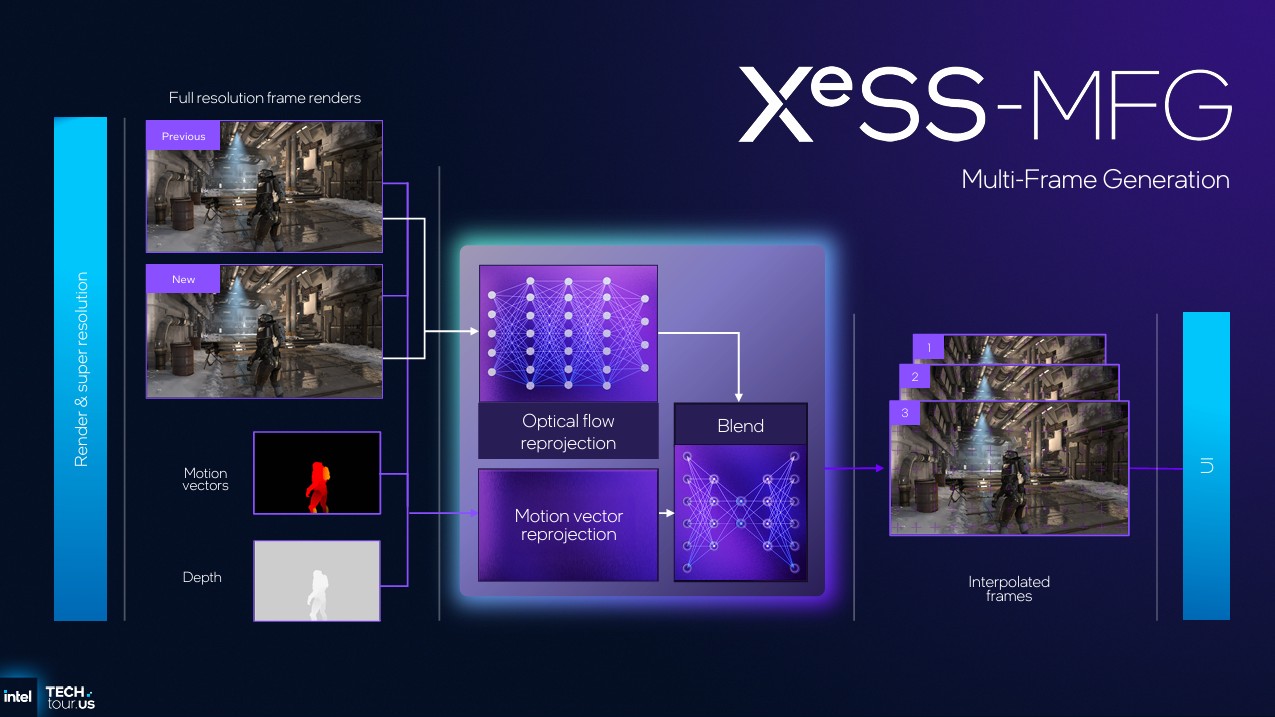
Intel’s upcoming Panther Lake processors will be more than just powerful hardware. They’ll also come with improved software, firmware, and features, including the new XeSS 3. XeSS, similar to NVIDIA’s DLSS technology for Intel Arc graphics cards, already boosts performance with AI-powered upscaling, can create entire frames for smoother gameplay, and minimizes input lag.
Intel’s XeSS 3 is now available, offering a feature called Multi-Frame Generation. This technology creates extra frames – up to three – from a single, traditionally rendered frame. Similar to NVIDIA’s DLSS 4, it can potentially boost your game’s framerate up to four times without noticeably impacting image quality or stability.
I tested Intel’s XeSS 3 Multi-Frame Generation with the game Painkiller and was really impressed – even more so than with NVIDIA’s version. This technology creates extra frames to boost performance, but it can add a slight delay, especially in fast-paced games like competitive shooters where quick reactions are crucial. This delay happens because the extra frames are made a little bit in advance.
Intel’s Multi-Frame Generation feature in XeSS 3 felt great in my limited hands-on time.
Even with a quick test, Intel’s Multi-Frame Generation seemed a little more responsive than NVIDIA’s. Importantly, all games that currently work with XeSS 2 will automatically be compatible with Multi-Frame Generation through XeSS 3. You’ll be able to control this feature separately within the Intel Graphics Software app.
Intel’s newest Arc graphics cards utilize a technology called Cooperative Vectors, which is part of DirectX 12 Ultimate. This AI-powered rendering technique uses small neural networks to help the graphics card work more efficiently, especially when creating shades and reducing overall strain.
Intel is introducing a new feature called Precompiled Shader Distribution. It automatically updates game shaders, stores them on Intel’s servers, and then quickly loads them when you start a game. This should reduce loading times and free up your computer’s graphics card.

Stay up-to-date with the latest news, insights, and features from Windows Central by following us on Google News!
Read More
- The Most Jaw-Dropping Pop Culture Moments of 2025 Revealed
- Ashes of Creation Rogue Guide for Beginners
- ARC Raiders – All NEW Quest Locations & How to Complete Them in Cold Snap
- Best Controller Settings for ARC Raiders
- Where Winds Meet: How To Defeat Shadow Puppeteer (Boss Guide)
- Ashes of Creation Mage Guide for Beginners
- Where Winds Meet: Best Weapon Combinations
- Netflix’s One Piece Season 2 Will Likely Follow the First Season’s Most Controversial Plot
- Eldegarde, formerly Legacy: Steel & Sorcery, launches January 21, 2026
- Berserk Writer Discuss New Manga Inspired by Brutal Series
2025-10-09 16:19